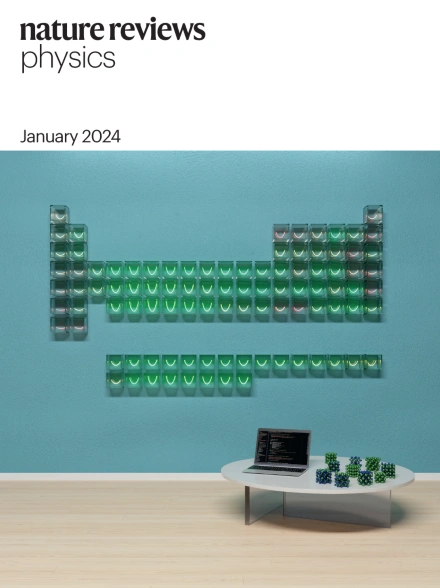Roadmap on machine learning glassy dynamics
IF 39.5
1区 物理与天体物理
Q1 PHYSICS, APPLIED
引用次数: 0
Abstract
Unravelling the connections between microscopic structure, emergent physical properties and slow dynamics has long been a challenge when studying the glass transition. The absence of clear visible structural order in amorphous configurations complicates the identification of the key physical mechanisms underpinning slow dynamics. The difficulty in sampling equilibrated configurations at low temperatures hampers thorough numerical and theoretical investigations. We explore the potential of machine learning (ML) techniques to face these challenges, building on the algorithms that have revolutionized computer vision and image recognition. We present both successful ML applications and open problems for the future, such as transferability and interpretability of ML approaches. To foster a collaborative community effort, we also highlight the ‘GlassBench’ dataset, which provides simulation data and benchmarks for both 2D and 3D glass formers. We compare the performance of emerging ML methodologies, in line with benchmarking practices in image and text recognition. Our goal is to provide guidelines for the development of ML techniques in systems displaying slow dynamics and inspire new directions to improve our theoretical understanding of glassy liquids. Slow heterogeneous dynamics and the absence of visible structural order make it difficult to numerically and theoretically investigate glass-forming materials. This Technical Review outlines the role that machine learning tools can have and identifies key challenges, possible approaches and appropriate benchmarks.

机器学习玻璃动力学的路线图
在研究玻璃化转变时,揭示微观结构、新兴物理性质和慢动力学之间的联系一直是一个挑战。在非晶构型中缺乏清晰可见的结构秩序,使得识别支撑慢动力学的关键物理机制变得复杂。在低温下取样平衡构型的困难阻碍了深入的数值和理论研究。我们探索机器学习(ML)技术的潜力,以彻底改变计算机视觉和图像识别的算法为基础,应对这些挑战。我们提出了成功的机器学习应用和未来的开放问题,如机器学习方法的可移植性和可解释性。为了促进协作社区的努力,我们还重点介绍了“GlassBench”数据集,该数据集提供了2D和3D玻璃成形器的模拟数据和基准。我们比较了新兴机器学习方法的性能,符合图像和文本识别的基准实践。我们的目标是为慢动力学系统中ML技术的发展提供指导,并激发新的方向,以提高我们对玻璃状液体的理论理解。缓慢的非均相动力学和缺乏可见的结构秩序使得对玻璃成形材料的数值和理论研究变得困难。本技术评论概述了机器学习工具可以发挥的作用,并确定了关键挑战、可能的方法和适当的基准。
本文章由计算机程序翻译,如有差异,请以英文原文为准。
求助全文
约1分钟内获得全文
求助全文
来源期刊

Nature Reviews Physics
Multiple-
CiteScore
47.80
自引率
0.50%
发文量
122
期刊介绍:
Nature Reviews Physics is an online-only reviews journal, part of the Nature Reviews portfolio of journals. It publishes high-quality technical reference, review, and commentary articles in all areas of fundamental and applied physics. The journal offers a range of content types, including Reviews, Perspectives, Roadmaps, Technical Reviews, Expert Recommendations, Comments, Editorials, Research Highlights, Features, and News & Views, which cover significant advances in the field and topical issues. Nature Reviews Physics is published monthly from January 2019 and does not have external, academic editors. Instead, all editorial decisions are made by a dedicated team of full-time professional editors.
 求助内容:
求助内容: 应助结果提醒方式:
应助结果提醒方式:


